
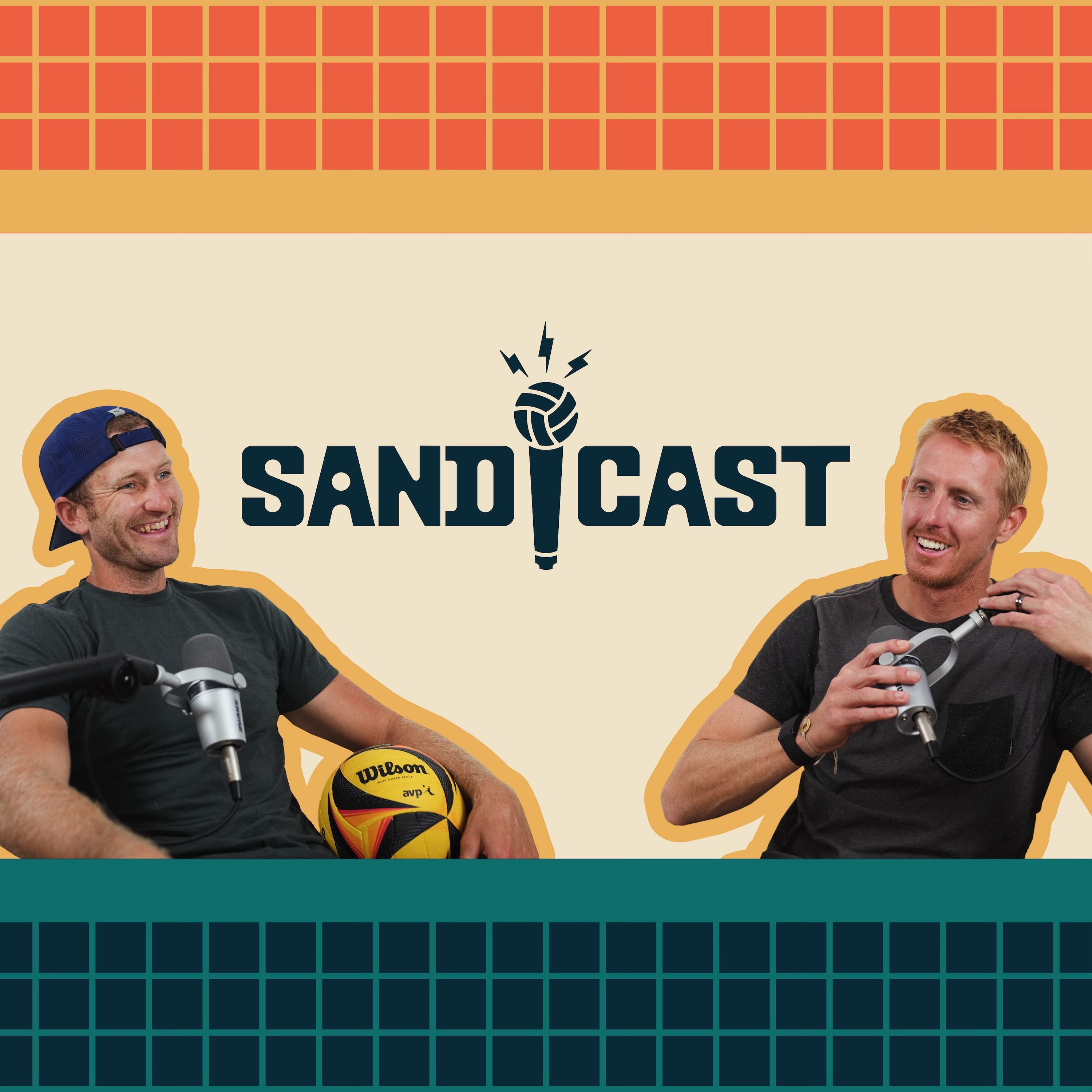
1.1M
Downloads
469
Episodes
SANDCAST is the first and leading beach volleyball podcast in the world. Hosts Tri Bourne and Travis Mewhirter take listeners into the world of the AVP, Volleyball World Beach Pro Tour and any other professional beach volleyball outlets, digging deep into the lives of the players both on and off the court as well as all of the top influencers in the game.
Episodes
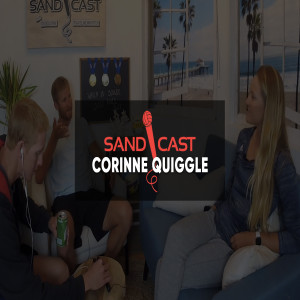
Wednesday May 22, 2019
Corinne Quiggle: Winning medals via tuk-tuks
Wednesday May 22, 2019
Wednesday May 22, 2019
It was, of all places, Phnom Penh, Cambodia, where Corinne Quiggle discovered her ideal method of travel. It isn’t by car. Or Uber. Or ferry. Or train. Or plane. It is, instead, a tuk-tuk, a type of pulled rickshaw where most have three wheels.
It’s how Quiggle and her partner, Amanda Dowdy, got around Cambodia for a two-star FIVB earlier this year. Maybe it’s the tuk-tuk, though it could just as easily be the memory that comes with the curious little vehicles: a silver medal on the FIVB Tour, Quiggle’s first in her young and burgeoning career.
She did not travel, of course, to discover the novelty of a new means of getting from one place to the next, though it’s certainly a nice bonus. Traveling, not necessarily to see the world, but to experience life on the world tour, was Quiggle’s goal at the beginning of this season. Barely five months in, she’s replete with both experience and stories to tell.
“It’s been my goal for as long as I’ve been in beach volleyball so I’m really just taking a good start on it,” Quiggle said on SANDCAST: Beach Volleyball with Tri Bourne and Travis Mewhirter. “I have to grow points right now so that’s why we’re kicking it out as early as we can, just so we have a chance to get into those bigger tournaments.”
It’s why Quiggle and Dowdy were amiss for the season-opener in Huntington Beach, and why they’ll likely miss a few more. The FIVB, for this season at least, is taking precedent. Rather than battle through a fully-loaded AVP Huntington, they flew to Malaysia for a three-star FIVB, claiming fifth out of the qualifier.
“It was a tough decision but for me it makes sense because if we want to get into these bigger tournaments down the rest of the year then we have to make that sacrifice,” Quiggle said. “There’s a ton of great teams so if we’re going to do it, then we have to put that above. We’re thinking ‘Hey we gotta do well in Malaysia so we can do well in those other tournaments.’”
She’s viewing this season through the long lens. As in, a Hubble type distanced lens. She understands that to make it into Tokyo’s 2020 Games would be a bit of a stretch. That would be lovely if they made it, but she knows it’s far more reasonable to shoot for Paris in 2024 or Los Angeles in 2028. So she’s preparing now. She’s seeing the world, through tuk-tuks and planes and boats and hitched rides from random strangers in Cuba, while learning what life is like on the world tour.
“This session of time is still a great learning period for me to know that this is what I have to do for 2024 and 2028,” Quiggle said. “We want to go and do as well as we can in these tournaments and if it doesn’t work out for 2020 I think it’s super important to go through that process. Knowing the process helps a lot.”
An added bonus: In learning the process, Quiggle is enjoying one of her finest years yet. It makes sense, considering this is her first full-time year on tour, after competing for Pepperdine and graduating in 2018. Already, she has won her first FIVB medal, came home with another silver at a NORCECA in Mexico, taken a top-10 at AVP Austin.
“It takes me a little while, like, ‘This is crazy. I’m going to Mexico for a little while, and then in three days I’m going to Malaysia,’” Quiggle said. “And to have the opportunity to play in Huntington, and then in Austin, it’s amazing to know that we’re going to be in there. We’re getting into these tournaments, even a three-star, even a qualifier, we have the opportunity to get into those tournaments.
“We’re balancing them out as we go. As it goes with the life of a beach volleyball player, we don’t know until like the week before. 21 days out we get alerted that we’re in but we still have to figure out all the little things.”

Wednesday May 15, 2019
Nicole and Megan McNamara are taking on the world
Wednesday May 15, 2019
Wednesday May 15, 2019
You could have seen this path a long time ago, had you been paying close enough attention. When Nicole and Megan McNamara, identical twins from Vancouver, Canada, were on the same indoor team. One set, the other hit. Four others were on the court, sure, but “she would set me every ball,” Megan said, as the two broke out in fits of laughter. “And our coach was like ‘You gotta give other people some love.’”
Not really, actually. There was beach, too. Nobody else to set. Nobody else to hit.
Just the twins.
Even in a quasi-team environment at UCLA, where they ushered in a new, small ball, fast movement offense that is becoming vogue in the college game, it was still just the McNamaras on court one. They could win and the Bruins could lose, or vice versa, which, Megan admitted, “is bizarre. It’s a bizarre feeling.”
“You can win your match but then UCLA loses and you’re happy, then you’re bummed or vice versa,” Nicole said. “You’re all pissed about your loss but the team’s all stoked.”
It was a bizarre and perfect four years in Westwood. Two National Championships. One of the most successful partnerships the game has seen in its nascent stages at the collegiate level. Now it’s back to their roots: Just the two of them. No scheduled practices with Stein Metzger and the crew. No team nutritionist or personal trainers or world class weight facilities.
Just Megan and Nicole, taking on the world.
That’s where they are right now, actually. Out in the world. Itapema, Brazil, specifically. Thousands of miles from home, whether that home be considered Vancouver or Westwood at this point. Recipients of the wild card, they’re straight into main draw, an excellent welcome to the tour gift from the FIVB, which is suddenly becoming replete with Canadians playing at a world-class level.
Two different Canadian teams – Melissa Humana-Paredes and Sarah Pavan, Brandie Wilkerson and Heather Bansley – held the top spot in the world at one point last season. The McNamaras are already high enough in the world ranks that they’ve earned a spot in the World Championships during the last week of June and first of July, in Hamburg, Germany.
“Our main goal for the summer was going to be to qualify for some of the bigger tournaments, and also to get settled with our new life in Toronto,” Nicole said. “Those were our main focuses so even qualifying for World Championships was amazing. We wouldn’t have expected that. If you would have told us that last year, we wouldn’t have believed you. It’s unbelievable.”
What’s unbelievable now will be the standard soon enough. It would have been unbelievable, when they were freshmen Bruins, to conceive of a time when a school not named USC would win back-to-back national titles. Now that’s the new standard.
It would have been unbelievable, when they were pre-teens, watching Kerri Walsh Jennings and Misty May Treanor, to conceive of a time when they’d not only be competing at their level, but pushing them. Now, after taking Walsh Jennings and Brooke Sweat to three in Mexico in October, that’s the new standard.
So they’ll continue setting standards, blowing past expectations, making the unbelievable quite real quite regularly. And they’ll do so, as they’ve always done so, together.
“If it’s just the two of us out somewhere in the world we just need to lean on each other a little more,” Megan said. “I think that kind of helps because we were kind of cushioned at UCLA with all the support, and also knowing that our two through fives have our back. Knowing we’ve invested a lot of time, money, it helps us come together.”
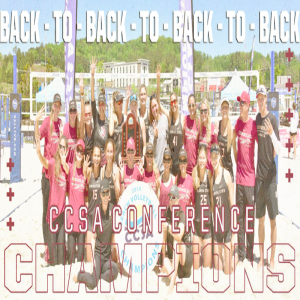
Wednesday May 01, 2019
Brooke Niles: Florida State's pieces are set for Gulf Shores
Wednesday May 01, 2019
Wednesday May 01, 2019
It was a little more than two months ago that Brooke Niles and the Florida State team suffered their first failure in a season without too many of them. Niles had made a commitment to herself, promising that she’d have the lineup figured out by the fall, before her Seminoles went off for winter break.
It was mid-February. Days before the season-opener against LSU. She still had no idea.
“There’s so many combinations,” she said back then.
They’ve figured it out. The tinkering is, with just a few days before the NCAA Tournament, where Florida State is the three seed, alas finished. Lineup’s set. Three wins, potentially, to earn their first NCAA Championship.
“Playing all the West Coast teams in the beginning, we thought we had the right pieces, we just didn’t have the right partnerships,” Niles said on SANDCAST: Beach Volleyball with Tri Bourne and Travis Mewhirter. “So we changed a lot, and the second time we played UCLA we had the right partnerships but they were still kinda new.”
Nothing is new now. The five starters who replaced half of the team that graduated from the 33-7 team that fell in the NCAA finals from a year ago are now experienced. The fresh partnerships have settled in, and it has shown to the tune of 17 wins in their past 18 matches, including a sweep of LSU in the CCSA finals, the fourth straight conference title for the Noles.
“Our goal is to get better every time we’re out on the sand whether it’s practice or a tournament, and I think we’ve been able to do that consistently over the last ten weeks or so,” Niles said. “It’s hard because a team could start off as your ones pair and other teams can progress at different rates. You’re supposed to set your lineup how it plays our in practice so those things, so we’ve had some teams progress at different rates than other teams and we’ve had new partnerships which has been exciting as a coach. You can drive yourself crazy with how many matchups you can have on your own team.”
Niles has found the sweet spot with Alaina Chacon and Madison Fitzpatrick on one, Sara Putt and Payton Rund on two, Brooke Kuhlman and Avery Poppinga on three, Molly McBain and Payton Caffrey on four and Macy Jerger and Kate Privett on five.
Each has found their stride, particularly courts two, four and five, all of which are the second-ranked pairings in the country on their respective courts. Rund and Putt have gone 13-2 since the switch; Caffrey and McBain are second-ranked on four trail only LMU’s undefeated Veronica Nederend and Emma Doud; Jerger and Privett are 14-1.
Niles may have genuinely had no idea, as she said back in February, what her lineup would look like come May. With a 28-5 record, another CCSA championship, a three-seed heading into the final weekend of the year, it seems the Noles have figured it out just fine.
“I’ve learned a lot in the past four years just being in that title game or close to it,” Niles said. “I want to treat every match the same way we’d treat a National Championship match. It’s just another beach, playing a different team across the net, and we just really want to focus on ourselves. We are getting better and better each time we’re on the sand.”
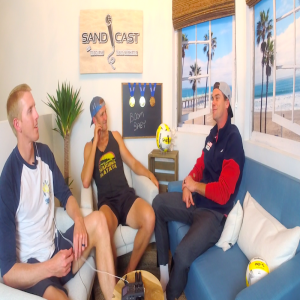
Wednesday Apr 17, 2019
Tyler Hildebrand: The most passionate man in beach volleyball
Wednesday Apr 17, 2019
Wednesday Apr 17, 2019
Tyler Hildebrand doesn’t really know what you should call him.
“Official title is Director of Coaching,” he said of his new role at USA Volleyball. But they’re working on title changes because, candidly, nobody really knows what that means.
“At the end of the day,” Hildebrand said on SANDCAST: Beach Volleyball with Tri Bourne and Travis Mewhirter, “who really cares? I think some people call it coach, head coach, director of coaching. I did some presentations at the AVCA and nobody knew what the heck the title was.”
What matters is not the title Hildebrand takes – or doesn’t take – but the role he plays. He was hired by USA Volleyball, after just a year at Nebraska in which he won a national championship as an assistant coach, to push the United States back on top of the world of beach volleyball. Ask most any player, and you’ll get the same response: They picked the right guy.
Hildebrand is what you could call a player’s coach. He was there at Long Beach State, his alma mater, last Friday night, watching the 49ers take on then-undefeated Hawai’i. He was there with Taylor Crabb, arguably the most promising and talented beach player in the United States.
Beach in the morning. Indoor at night. Volleyball all day long.
That, if nothing else, is why Hildebrand is so good at what he does. And he is good. After setting for Long Beach from 2003-2006, leaving as a three-time All-American, Hildebrand has enjoyed success everywhere he has gone.
As an associate head coach for Long Beach in 2016 and 2017, he helped the Niners to consecutive NCAA semifinals. In his lone year at Nebraska, in 2017, the Huskers won an NCAA Championship.
On the beach, he oversaw the most successful run of Casey Patterson’s career, there in the box as Patterson and Jake Gibb established themselves as the top team on the AVP Tour, winning more than double the next team. He was there for a Manhattan Beach Open win and an Olympic berth.
But again: Don’t call him coach. Hildebrand doesn’t just oversee one team anymore – he oversees the development of all of the top teams and prospects in the USA Volleyball system, everyone from the established talents in Jake Gibb and John Hyden to the promising prospects in Carly Wopat and Troy Field.
“Our vision right now at USAV Beach, it’s to be the best students at our craft,” Hildebrand said. “And I know that sounds like a big scoop of vanilla ice cream, blah blah blah. But the people who are really excelling right now are at the learning or technological edge.”
Hildebrand has an old soul, but still: There’s a wealth of technology and statistics in the sport. It’s time the United States began using it to its advantage. Which is why, more often than not, you can find Hildebrand in the film room, either with the athletes or just by himself. It’s possible that nobody on Earth has watched more film in the past year than Hildebrand, who is constantly searching for trends – quick sets, shoot sets, options, jump serving, float serving, whatever.
“In beach volleyball, what I realized when I came out here five or six years ago, it was like ‘Whoa, in indoor we would use video,’” Hildebrand said. But in the beach?
“We’d watch maybe a set,” Bourne said.
It’s something Hildebrand is trying to change. Not radically. Not revolutionarily. Just a bit here and there. An hour or so every few days. Watch yourself. Watch opponents. Just watch the game. See what you can find.
“One thing I’ve been doing, probably more than any other coach in the United States, is watching the game,” Hildebrand said. “Watching the world. That’s the one I’m pushing big with our athletes and coaches. All of this stuff, maybe we’ll see something, ‘Wow! That’s useful!’ And then asking the question why.
“The hardest part about beach volleyball is that everybody is on their own. You can have great practices. You can work really hard. You can be really tough. But in the middle of the game, how do we think through the game? Let’s say we watched a couple matches, we can think through them.”
So he’ll pour over the film. He’ll find the trends. He’ll present them to the athletes and from there, they can make of it what they will. It’s not his job to coach every specific team now. It’s to simply put them in a position to be as successful as possible. So if there’s one thing you could label Hildebrand – not coach, not director, not a director of coaching – it’s this: He is, simply, one of the most passionate people in beach volleyball.
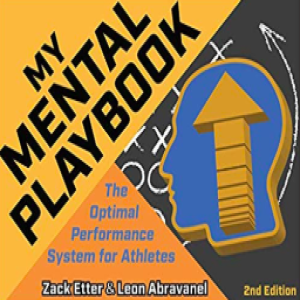
Wednesday Apr 10, 2019
Leon Abravanel: The unexplored benefits of mental training
Wednesday Apr 10, 2019
Wednesday Apr 10, 2019
It was Yogi Berra who best expounded upon the upside of mental performance in athletics: “Sports are 90 percent mental, and the other half is physical.”
Questionable math aside, the former Yankee catcher, and indelible quote machine, had a point. Sports, and the majority of facets of life which require exceptional performance, are rooted vastly in mental strength and fortitude.
It made for an intriguing question for Leon Abravanel, a former professional soccer player for the Kitsap Pumas, Los Angeles Blues and Athletico Paranese. If sports are, indeed, 90 percent, “even 99 percent,” Abravanel suggested, mental, “then why is nobody focusing on this stuff?” he said on SANDCAST: Beach Volleyball with Tri Bourne and Travis Mewhirter.
“If it’s 99 percent of the game, of the performance you’re about to go do, why is there no training around this? And if there is, where do we find it?”
His search led him, at first, to an alarmingly high price tag. Sports psychologists run about $250 an hour. And those are the low end. The top in the business can be as much as five figures. Abravanel was good at soccer, but he wasn’t five figures an hour for a sports psychologist good at soccer.
As it can often go with retired athletes – Abravanel retired from soccer when he was 25 – his mind needed a new project, a new something at which to be exceptional. To sports psychology he went, partnering with former football coach and current Mental Performance Coach Zack Etter. Together, the two sought to make sports psychology more available. Available to athletes of all ages and sizes, of all socioeconomic statuses. Available via a book, “My Mental Playbook: The optimal performance system for athletes” which they co-authored and published this past October.
“We tried to condense all the information that we would learn from 30 sports psychology sessions into one customizable mental performance playbook that you fill out,” Abravanel said. “It has tons of exercises to create your own routine, and that’s a huge piece of the sports psychology world. It can’t be cookie cutter. It has to be very specific to the particular athlete.”
This is not your normal book you’d pluck off the shelves at Barnes and Noble (if anybody still shops at Barnes and Noble). For one, it’s only 70 pages long. Abravanel knows what it’s like to be an athlete. Two practices a day. Lifting. Recovery. By the time all of that is finished, most don’t have the time or the mental bandwidth left to read a 400-page non-fiction dive into sports psychology. Two, it’s more workbook than traditional book, two parts journal, one part reading. It provides leading questions for the athletes to answer, literally, in writing.
“This kind of stuff can help you in so many other ways as well,” said Bourne, who has explored his fair share of mindfulness exercises throughout his recovery from an autoimmune disease. “You can easily translate everything you learn, from learning the mental aspects of sport to dealing with pressures and whatnot to any aspect of life, which is great. To actually put it on paper in a log or a journal is great, it’s something I’ve been meaning to do.”
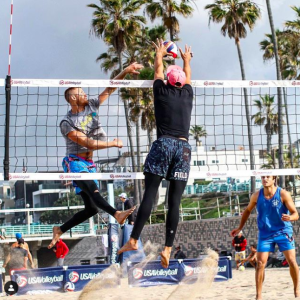
Wednesday Mar 27, 2019
Troy Field: More than the guy with the big vertical in a pink hat
Wednesday Mar 27, 2019
Wednesday Mar 27, 2019
Troy Field had to pause for a second on the set of SANDCAST to catch himself.
“Back in the day,” he repeated, laughing. “Back in the day, like, three years ago.”
It seemed to catch him off guard as much as it can oftentimes do to those who have seen Field play. Three years ago, nobody had seen the kid in the pink hat. Hadn’t seen him flying around with a vertical north of 40 inches out of sand. Hadn’t seen him reverse wind-milling, evoking images and comparisons to a young Sean Rosenthal. Hadn’t seen him at the South of the Border Volleyball Vacations. Hadn’t seen him medaling at NORCECA’s with Reid Priddy, one of the greatest the indoor game has known. Hadn’t seen him donning those signature Slunks boardshorts of his. Hadn’t seen all of that coalesce into his being named the winner of the Top Gun Award at the AVP banquet, given to the male and female who, well, most look the part of volleyball players in the Top Gun movie.
“It’s been a roller coaster,” Field said. “Just up and down.”
Mostly up. Both physically and metaphorically. Field’s matches invariably draw some of the biggest crowds to watch him go up up up. He wishes he could explain it, too, that massive, explosive, enviable vertical of his. Wishes he could give a legitimate answer to the legions of fans who ask how he jumps so high and if he can teach them. He feels bad that his only answer is really a shrug and a sheepish grin that implies the gift of God and genetics.
"I feel so bad because I'm not that person who trained it out," Field said. "I'm not the guy who repped it out. That's kind of it."
Field is more than an enormous vertical. Far more. When the AVP needs a volunteer for its AVP First events, Field is one of the first to sign up. During season, at the Sunday clinics, lest Field be playing in the semifinals or finals, he’ll be coaching the kids. This off-season, he’s been traveling back and forth, doing South of the Border Volleyball Vacations and multiple events in Texas. He’ll be the first to engage with fans, both in person and on social media.
Shoot, the guy is the first to offer help to the guys he’s playing against. When he’s knocked out of tournaments, he’ll go grab a camera for the McKibbins or Casey Patterson. He’ll run up to the Amazon booth and hop on the mic with Camryn Irwin and Kevin Barnett.
Immediately after finishing this podcast, he offered to do video, photo, whatever SANDCAST might need, just give him a call.
Just Troy being Troy.
“With the AVP 2018 season being his first full year on tour,” the AVP wrote on Instagram. “Troy Field immediately made his presence felt! Between incredible plays on the court, engaging with the AVP Family and working with the community through AVP First, Troy is becoming the ultimate AVP pro.”
Three years ago – or, “back in the day,” as Field likes to say – such praise from beach volleyball’s biggest tour would have been unthinkable. Three years ago, Field had been playing ball in Doheny where "the youngest guy was, like, 45 years old." Working odd restaurant jobs. Watching enough film of Karch Kiraly that he eventually adopted his signature pink hat and the goofy-footed approach.
“Now,” he said, “it’s onto the mental side of things… I went from qualifier, right on the cusp to a main draw athlete and now I have to be the guy who qualifiers are thinking about. I was that guy, like ‘I have to beat Tri and Trevor’ or ‘I have to beat Rosie.’ I don’t want to be the guy that people are watching film on. It’s weird. Roles have reversed and switched and doors have opened.”
And they’ll continue to open, to the point that, not too far from now, he’ll look back on this story, laugh at where he was at that point in his career, and say “Back in the day…”
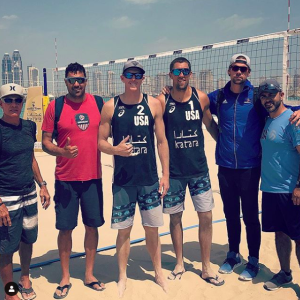
Wednesday Mar 20, 2019
State of the Beach Volleyball Union: Recapping Doha, Exciting AVP News, Partner Switches
Wednesday Mar 20, 2019
Wednesday Mar 20, 2019
There is no shortage of ways in which to describe the absurd depth on the World Tour. You can start with the obvious, the upstart Chileans who many might claim to have come out of nowhere but, really, they’ve been here, hiding in plain sight all along.
In 2011, Esteban and Marco Grimalt – cousins, not brothers – played in their first FIVB event. In the time between then and Sydney, a three-star event in early March, they had competed in 59 tournaments. They never switched partners. Nor were they ever really much of a threat at all.
And yet there they were in Sydney, winning six straight matches, including the gold medal, over qualifiers Enrico Rossi and Adrian Carambula.
Though perhaps that should be your measurement of depth – the fact that Rossi and Carambula could march out of the qualifier and straight to the gold medal match. But just when you might think that’s impressive, the Grimalts one-upped them the following week, at a four-star in Doha.
Now, it was their turn to begin in the qualifier, smoking a talented German team in Nils Ehlers and Lars Fluggen, 21-16, 21-13. It didn’t matter that every elimination match in the bracket rounds, save one, the finals, went three. Didn’t matter that they had played six matches the week before.
By the time the finals rolled around, the Grimalts seemed as if they were playing their first match, not their 14th in 11 days, with international travel and time zone switches and all other manner of mental and physical obstacles to throw them off.
“There’s no good draws,” Tri Bourne said on his eponymous podcast, SANDCAST: Beach Volleyball with Tri Bourne and Travis Mewhirter. “How many times do you see a qualifier team win it?”
It happens, though it’s rare. Bourne and John Hyden did it in Berlin of 2014. Poland’s Piotr Kantor and Bartosz Losiak did it in Rio de Janeiro in 2016. Same goes for Alvaro Filho and Saymon Barbosa at the Fort Lauderdale Major in 2017.
The difference with those teams, however, is that they were all new. The Chileans have been around for nearly a decade, and now, suddenly, they’re winning back-to-back tournaments, the second of which out of the qualifier.
“It’s so gnarly,” Bourne said. “I was just talking to my agent about it and he was asking about, saying ‘Oh, seventeenth doesn’t sound very good for us, does it?’ And I was like, ‘Honestly, when any given team can win on any given week? It’s not like the top ten teams in the world are never taking seventeenths. The World Tour is just constantly getting mixed up.’”
Perhaps the best measurement of depth, then, is to look at the bottom, not the top. At the gold medalists and world champs who, having already proven they are the best in the world at what they do, either barely cracked pool or didn’t even make it to pool play in the first place.
A week after playing in the finals, Rossi and Carambula failed to qualify. Fellow Italians Alex Ranghieri and Marco Caminati fell to the same fate. Filho and Ricardo Santos, the most decorated blocker in beach history, didn’t make it past pool.
Joining Bourne and Trevor Crabb in seventeenth were 2016 Olympic gold medalist Bruno Oscar Schmidt and 2017 World Champ Evandro Goncalves. Alongside them were former world No. 1 Alex Brouwer and Robert Meeuwsen. Bruno’s partner in those 2016 Olympics, Alison Cerutti? Another seventeenth, alongside Andre Loyola, one of the most promising talents in Brazil.
Such is the state of the world tour.
"I'm obviously not happy with our finish," Bourne said. "But I'm super happy with our team."
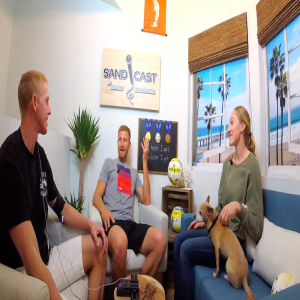
Wednesday Mar 13, 2019
Emily Day: The LMU Hall of Famer making a run at Tokyo 2020
Wednesday Mar 13, 2019
Wednesday Mar 13, 2019
Maybe Emily Day should just come on SANDCAST: Beach Volleyball with Tri Bourne and Travis Mewhirter, every week.
The first time she hopped on, she did so with her partner, Betsi Flint, on the first on-site podcast, just behind an outside court at AVP San Francisco. Two days later, her and Flint were the last team standing, beating Geena Urango and Caitlin Ledoux in the finals, 21-17, 16-21, 15-7, marking their first win as a team.
“We should do that more often,” she said, and whether she was talking about coming on the podcast or winning, either would have sufficed. In the next AVP, on Lake Sammamish in Seattle, her and Flint won again, no good luck podcast necessary, as they did in Haiyang, China, two weeks later.
Then again, when she came back on SANDCAST for her second appearance, she left the studio and went straight to the podium again, returning home from a three-star in Sydney with a silver medal around her neck.
“We tend to have that effect,” Bourne joked.
In reality, of course, it is the ever-so-humble Day who has that effect on her own career. She always has. She’s won with virtually everyone she’s played with, on virtually every tour she’s played. Doesn’t matter if it’s the old-school Wide Open series with Heather McGuire or a NORCECA with Summer Ross or Whitney Pavlik or an AVP with Jen Kessy or the Manhattan Beach Open with Brittany Hochevar or internationally with Flint.
She’ll win split-blocking or full-time blocking. She’ll win with loud partners and quiet partners and goofy partners and intensely competitive partners. And it is that ability to win, with personalities and skill sets of any shape or size, that recently helped land Day in the Loyola Marymount Hall of Fame.
“I was honored,” she said. “Absolutely shocked. It was such a cool weekend, just felt a part of LMU athletics.”
It’s no wonder that she still does. Though she finished competing for the Lions in 2008, her team is still very much an LMU one. Her partner, Flint, is in her fourth year as an assistant coach for the Lions after a beach career in which she was twice named All-American. When the college season ends, they’ll be helped by John Mayer, currently the head beach coach for LMU.
As it stands right now, Team LMU is second in the world in the push for the Tokyo Olympics, behind only Brazilians Rebecca Cavalcanti and Ana Patricia Silva.
This will be Day’s second attempt to qualify for an Olympic Games. The first was a shot at Rio de Janiero in 2016 with Kessy. They finished as the first team out, U.S. No. 3.
“It was tough,” she said. “We had chances and opportunities but of course you always look back and think ‘If we would have done better in this one then our draw would have been better for this one. It’s a grind. It was a grind. A roller coaster.”
Now it’s onto grind No. 2, roller coaster No. 2.
“We just can’t let the highs get too high and the lows get too low,” she said. “I think something that Betsi and I have done well is – you go from winning San Francisco to a four-star in Poland and nobody cares that you won in San Francisco. The highs and the lows, you gotta stay even-keeled. You’re going to get good draws, and you’re going to get bad draws. It’s all about what you do with what you have in front of you.”
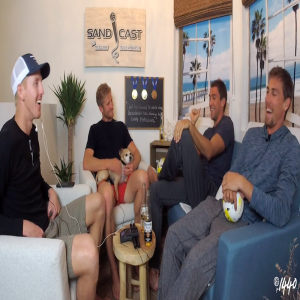
Wednesday Mar 06, 2019
HawaiiCast with Tri Bourne and Taylor and Trevor Crabb
Wednesday Mar 06, 2019
Wednesday Mar 06, 2019
The relationship between brothers is often too complicated for even brothers to fully understand, let alone communicate to the world beyond, especially when their immediate world beyond knows their life history – where they grew up and went to high school, where they went to college and what they’ve done since.
When you throw into that the fact that the two brothers in mind – Taylor and Trevor Crabb – were, for a period of two years, also simultaneously maintaining the most volatile of relationships – business partners, roommates, volleyball partners, running among the same group of friends – it would have been quite curious if they didn’t fight a bit than to the extent they did.
So yes, when Taylor and Trevor Crabb played beach volleyball together, as they did at the professional level in 2015 and 2016 and in various tournaments in 2011 and 2013, there were times they didn’t get along.
And there were times – almost all the time, really – on the court, that it just didn’t matter.
“It’s every partnership,” Taylor said on SANDCAST: Beach Volleyball with Tri Bourne and Travis Mewhirter. “The longer you’re with someone, the more stuff is going to get on your nerves. Being brothers just amplifies it that much more. For the most part we were able to put it behind us and perform, and we played great for the year and a half that we were together. But just like every partnership it gets harder and harder as it goes on.”
Watch any sibling partnership and you will see much of the same. Nicole and Megan McNamara at UCLA “will say things to each other they would never say to a different partner,” former Bruin assistant coach Jeff Alzina said. But they’re able to snipe at each other, to demand more, because they’re sisters. The McKibbins, Riley and Maddison, are no different. This is just what siblings do.
They demand more. Expect more.
And besides, it’s not as if a true blood relationship is needed to dig at one another. Growing up, the Hawaiian crew – the Crabbs, Bourne, McKibbins, Brad Lawson, Spencer McLaughlin – simply labeled Taylor “little shit.” Nobody is quicker to talk a little trash to Trevor than Bourne, his own partner, and vice versa.
“They still try to give me crap,” Taylor said, “but it’s getting harder to.”
The point in their careers is a rare one for siblings of any sort in the sense that, 18 months from now, it is not all that unlikely to see both Crabbs in the Olympic Games, Tokyo 2020. Taylor and Jake Gibb are the No. 2 team in the U.S., Bourne and Trevor No. 3.
“You really gotta stay present in it,” Bourne said. “It’s such a long process. As much as our sport weighs on Olympics, you want that label, that’s everyone’s dream, it’s literally one tournament of your whole career. If you get caught up in two years of that certain event putting pressure on every other event, you’re really wasting your time. You just had a great finish on the world tour? Enjoy that. Be there.”
And so the process begins. Taylor and Gibb are in Sydney this week for a three-star, their first event of the Olympic push and of the 2019 season. Trevor and Bourne skipped Sydney, focusing instead on a four-star in Doha the following week. By 2020, three kids from the Outrigger Canoe Club could be donning the red, white, and blue.
“It’s pretty nuts,” Bourne said. “We were – well, we still are – cocky little shits.”
You see, whether the birth certificates say so or not, this Hawaiian bunch is a family. And, like most competitive siblings, the trash talk never stops, no matter what side of the net you’re on.
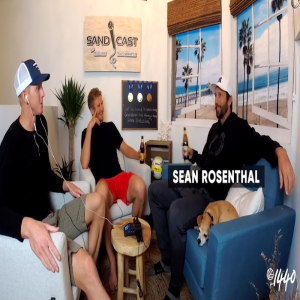
Wednesday Feb 27, 2019
Sean Rosenthal, and a career not measured by any normal standards
Wednesday Feb 27, 2019
Wednesday Feb 27, 2019
It was almost as if Sean Rosenthal didn’t believe the words that had just come out of his mouth.
“Leaving Jake [Gibb] for Phil [Dalhausser],” he said on SANDCAST: Beach Volleyball with Tri Bourne and Travis Mewhirter, “might have been the worst volleyball decision of my career.”
He smiled, laughed. Then said it again, as if to cement it into reality what he had just admitted.
Rosenthal’s partnership with Dalhausser was a fascinating one, though the reactions to it, including Rosenthal’s own, are complicated. By conventional standards, they were the best team in the world, winning their first event together in 2013, piling on two more Grand Slam golds. Rosenthal had never won that many tournaments on the world tour in a single year. And then he did it again, as he and Dalhausser tacked on three more FIVB golds during a run of four consecutive finals appearances in Navanger, Gstaad, The Hague and Long Beach.
Less than a month later, they won the Manhattan Beach Open.
For two straight seasons, they were the leading gold medalists on the world tour and also took home the biggest domestic tournament.
By any human standard, the partnership was incredibly successful. But Rosenthal isn’t considered human. No, this is the Son of Jorel, the kid from krypton. This is Superman we’re talking about here, and Superman doesn’t live by the mortal standards the rest of us do.
“For two years, we were the best team in the world,” Rosenthal said of his partnership with Dalhausser. “I think a little bit of it is because we didn’t win as many tournaments on the AVP as we were expected, but we won a lot on the world tour. Leaving Jake for Phil was the worst volleyball decision of my career. It’s crazy, it’s hard to say, but I think it might be true.”
It might be true not because Rosenthal and Dalhausser were disappointing – they played together two years, they were the best team in the world for two years – but because Rosenthal and Gibb were just that good. They had just won the FIVB Team of the Year. Rosenthal, in an era of Emanuel Rego and Alison Cerutti, of Dalhausser and Todd Rogers, of Reinder Nummerdor and Richard Schuil, was named the best player in the world.
Even after the FIVB season closed, they followed it up with a win in Santa Barbara during the AVP’s truncated, two-event revival season under Donald Sun.
And then Rosenthal gave Gibb the call. He had already been in touch with Dalhausser. He knew, no matter what happened in Santa Barbara, he was going with Dalhausser for the next season.
“[Phil] was just like, ‘What do you want to do? Do you want to play together next season?’” recalled Rosenthal. “And I was just like, ‘Uh, yeah.’ If your boss comes up to you and asks you, ‘Do you want a raise?’ It’s not like, ‘No, I’m good where I’m at.’ It’s kind of one of those things, not only from prize money but sponsor money, which went way up, too. Got RedBull and UnderArmour and a couple others, like SmartCar, which were basically through Phil.”
But would he do it again?
“I’d probably do it again,” Rosenthal said. He’d do it again because Dalhausser is a name that belongs in discussions with those of Kiraly and Smith and Stoklos and Steffes, the best the game has ever seen. He’d do it again because, even with a rash of injuries and awful timing to both Rosenthal and Dalhausser, they still finished as the best team in the world in consecutive years.
Such is the standard of Sean Rosenthal. When finishing as the top on the world tour is cause for questioning a partnership change.
We are now in the final act of Rosenthal’s brilliant career, one in which he has accumulated more than 20 wins, compiled a resume that will rank him amongst the all-time greats and won with a playing style that will immortalize him in the South Bay community.
His focus is still on volleyball, yes, but it’s turned more to his kids, constant bundles of energy. It’s turned to taking some time off. Golfing. Enjoying beach volleyball for what it is – a wonderful sport, an incredible way to make a career. More important, a way to get the kids out of the house and spend some energy.
“We all,” Rosenthal said, “need to get down to the beach and practice.”
One generation of Rosenthal gradually fades out. The next charges in.